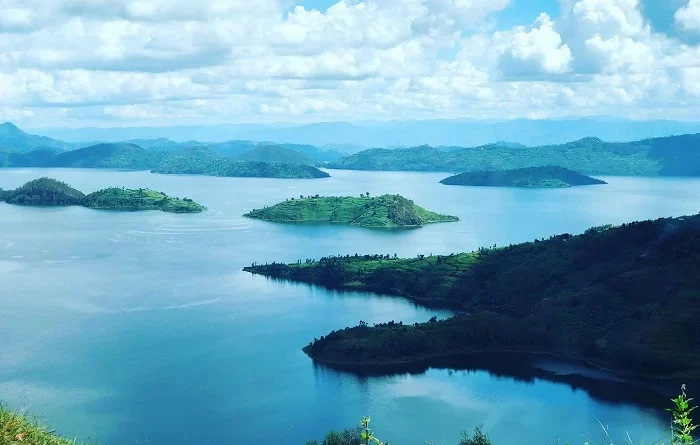The Twin Lakes of Rwanda: Burera and Ruhondo – A Historical and Environmental Treasure
When primary school students in Rwanda are asked about geography, particularly the country’s natural wonders, two lakes often come to mind: Burera and Ruhondo, located in Burera District. These lakes are deeply embedded in the nation’s cultural consciousness, and many have sung along to the classic song “Turate Rwanda yacu” by Buhigiro Jacques. The song, beloved by older generations, nostalgically celebrates Rwanda’s lakes, praising Kivu, Muhazi, Buganza, and the twin lakes Burera and Ruhondo, among others.
To better understand the origins and significance of these “twin lakes,” our source Kigali Today spoke with Sabin Nsengamungu, a local expert residing near the lakes, who offered valuable insights into their history.
According to Nsengamungu, the lakes are referred to as “twins” because they were formed simultaneously, lying close to each other, although they are not physically connected. Together, they span approximately 2,800 hectares, separated by about one kilometer of land.
Nsengamungu explains that the lakes owe their existence to volcanic activity, particularly the eruption of Mount Muhabura. Before the volcanoes erupted, water from Rwanda’s mountains flowed freely into Uganda. However, the volcanic activity blocked these water channels, causing the water to collect in the Burera and Ruhondo basins, giving rise to the lakes. He notes that while the exact year of their formation is unknown, it likely occurred during what is referred to as the “Christian Era” when many of Rwanda’s landforms took shape.
Interestingly, the lakes do not lie at the same altitude. Lake Burera is positioned higher and is significantly larger, while Lake Ruhondo sits at a slightly lower elevation. Nsengamungu points out that both lakes are fed by water from the Urugezi wetland, which covers over 6,735 hectares. If this wetland were to dry up, the lakes would cease to exist, highlighting its critical role in maintaining the lakes’ water levels.
Although both lakes are predominantly associated with Burera District, Lake Ruhondo also touches parts of Musanze and Gakenke Districts. Lake Burera, on the other hand, is entirely confined within Burera District, bordering several of its sectors, including Kagogo, Kinyababa, Rusarabuye, Gitovu, Kinoni, and Rugarama. Lake Ruhondo, however, extends into sectors of both Burera and Musanze, and possibly even a small portion of Gakenke’s Kamubuga sector.
Despite their natural beauty, the lakes are also a crucial resource for local communities. Jean de la Paix Manirafasha, the former Vice Mayor of Social Affairs in Burera District, discussed the lakes’ significant contributions to the livelihoods of residents. Separated by the Ntaruka Mountain, Lake Burera drains into Lake Ruhondo, powering the Ntaruka hydroelectric plant, a key source of electricity for the region.
Manirafasha explained the process in detail: water flows from the Urugezi wetland into Lake Burera, which then feeds into Lake Ruhondo, generating electricity at the Ntaruka power station. In addition to energy production, the lakes provide vital ecological benefits, supporting local fisheries and contributing to the area’s biodiversity.
While Lake Burera is known for its immense depth, making it difficult for large fish species to thrive, it ranks as the second deepest lake in Africa, following Lake Tanganyika. As a result, only small fish, such as “amahera” and tiny sardine-like fish, inhabit its waters. Lake Ruhondo, however, supports a more substantial fish population. Beyond fisheries, the lakes’ scenic beauty attracts tourists, and the air quality in the region is renowned for being exceptionally clean, offering locals and visitors alike a breath of fresh air.
In conclusion, the twin lakes of Burera and Ruhondo are more than just natural wonders; they are essential to the environmental, economic, and social well-being of the surrounding communities. Whether through tourism, fisheries, or electricity generation, these lakes are a vital part of Rwanda’s northern landscape, serving as a source of pride and sustenance for those who live nearby.

